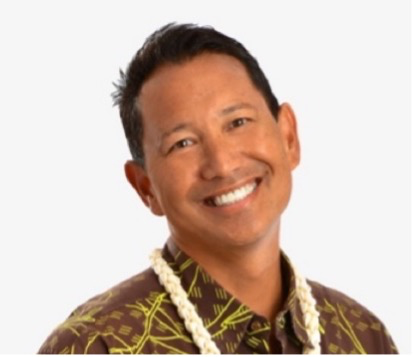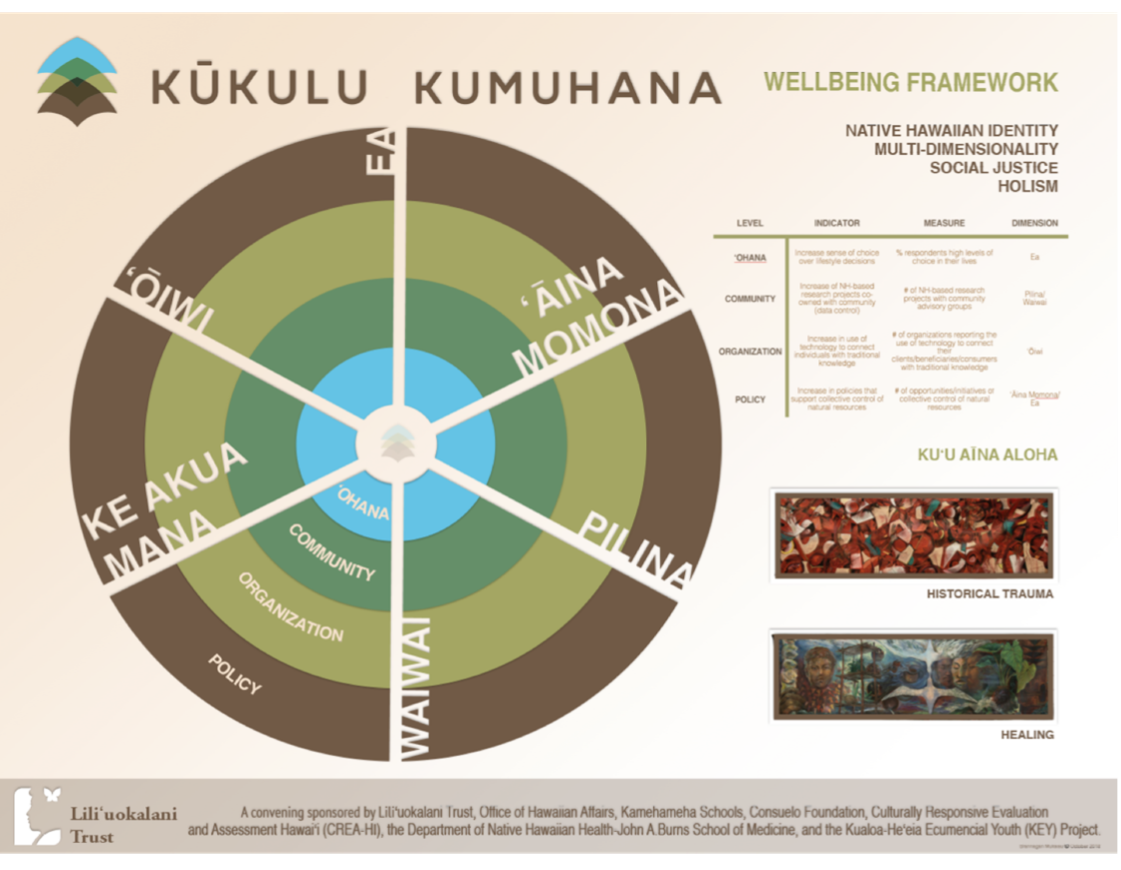Curator’s note: This week’s AEA365 posts contain Hawaiian language words that use certain diacritical markings. We make our best efforts to include these markings to be as culturally and grammatically accurate as possible, however, these markings often display as question marks or boxes, and may display differently on different browsers and devices. For best readability we have omitted some of those marks here.

Aloha. I’m Palama Lee, by day a researcher and evaluator for Lili’uokalani Trust (LT) and by night a Netflix watching, game playing, semi-nerd superhero. I like divergent thinkers, abstract art, and my guilty pleasure is Italian dry salami. In this blog, I?ll talk about the importance of conceptualizing wellbeing from an Indigenous perspective and how it contributes to the field of research and evaluation.
I?ve had the cool opportunity to support poverty solutions in Native Hawaiian (NH) contexts. While the poverty literature is robust from a Western perspective and economic lens, it remains largely deficit focused. At LT, we flipped our thinking to counterbalance from a strengths-based approach guided by these wonderings, “what do conditions of thriving, abundance, and wellbeing look like from a NH epistemic perspective” and “what are indicators and measures across ecological systems (e.g., micro, mezzo, macro) as wellbeing guideposts”?
In 2017 a group of disruptive thinkers comprised of researchers, evaluators, artists, activists, and elders gathered to talk-story about NH wellbeing. After two days, Kukulu Kumuhana emerged from this pooling of collective resources as a holistic, relational wellbeing framework with six dimensions: 1) Ea—self-determination, 2) ‘Aina Momona—healthy and productive land and people, 3) Pilina—mutually sustaining relationships, 4) Waiwai—ancestral abundance and collective wealth, 5) ‘Oiwi—cultural identity and native intelligence, and 6) Ke Akua Mana—spirituality and the sacredness of mana.
Since 2017 we have socialized Kukulu Kumuhana at gatherings and colliders, shared it at Hawai’i and national conferences, and continue to deepen our understanding of how it frames research and evaluation within NH contexts. We have identified preliminary Indicators & Measures and look forward to using them as a framework to conduct evaluations in NH contexts.
Lessons Learned (and Provocations):
- Consider ways to level the power field. I’ve often said evaluation is an act of sovereignty, laden with privilege and power. Evaluators, how can we push against oppressive practices by cohosting evaluation spaces to share power with Indigenous communities such as incorporating their values and what they see as important to guide the evaluation process?
- Context matters. For NHs, context includes our stories of creation (cosmology), ways knowledge is revealed (epistemology), and relationships with our ancestors in the physical and spiritual realms. Deep, meaningful, and important histories lay just below the surface. How do we include these Indigenous contexts in our evaluation stories? How can we cohost spaces with Indigenous communities to allow these stories to unfold, to breathe them in, and to ask permission to re-share them?
- Feeding the “dragon”. We often feed the funder, or dragon, the metrics the dragon likes, wants, and eats. Yet, how can we teach the dragon to expand its diet? How do we work with funders to ensure the goals, outputs, and outcomes we are asked to measure are meaningful and reflective of Indigenous social realities? Afterall, while the dragon prefers papayas, it may begin to appreciate the taste of mangos!
Leaning into diverse perspectives spotlights what really matters to Indigenous populations and advances ea or self-determination. Kukulu Kumuhana is one example when evaluating within NH contexts.
Rad Resource:
Kukulu Kumuhana: Creating radical and new knowledge to improve Native Hawaiian wellbeing
Hot Tip:

We include in each of our posts this week categories of well-being from Kukulu Kumuhana. Today we offer ‘oiwi which refers to cultural identity — knowing who and where we come from. Pronounced /oo-ee-vee/.
The American Evaluation Association is hosting CREA-HI Week. The contributions all this week to aea365 come from members of the Hawai’i affiliate of Cultural Responsive Evaluation and Assessment (CREA). Do you have questions, concerns, kudos, or content to extend this aea365 contribution? Please add them in the comments section for this post on the aea365 webpage so that we may enrich our community of practice. Would you like to submit an aea365 Tip? Please send a note of interest to aea365@eval.org. aea365 is sponsored by the American Evaluation Association and provides a Tip-a-Day by and for evaluators. These views and opinions do not necessarily represent those of the American Evaluation Association, and/or any/all contributors to this site.
Photo:

ALOHA e Kim, what a wonderful and challenging provocation! Questions, and good ones like yours, lead to adventurous journeys. In my work, I have not uncovered donors in the philanthropy industry adopt culturally-relevant metrics. So, I contacted a few colleagues who provide community grants. Unfortunately, most of them do not; however, I did uncover one, a local health foundation, who adopted Pilinah?, an Indigenous model of health, based on connections and relationships (https://www.ncbi.nlm.nih.gov/pmc/articles/PMC6700459). Pilinah? was created not by the funder but by several health-focused agencies in Hawai?i through a series of community talk-stories. The foundation is funding community-based organizations over multiple years (it sounded like a pilot). Cool, right! I would have never known this without your nudging question. Mahalo e Kim!
The correct spelling of the Indigenous health model is spelled Pilinaha. The 2nd “a” has a macron over it.
Thank you for sharing this experience, Palama! I love the last point in your lessons learned–it resonates because that is often a point that has challenged my evaluation work. Have you had the experience of seeing culturally-relevant metrics adopted or digested by donors in a more systemic way, outside of a program team?